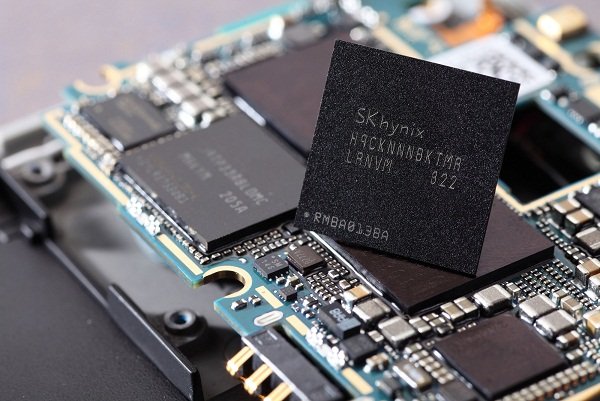More and more devices this year come with 2GB RAM in 4x 4Gbit configuration, and this is about the limit today because there aren’t 8Gbit (1GB) mobile RAM chipset available. This is about the change as Hynix has just announced they have developed 8Gbit LPDDR3 based on 20nm process technology.
Hynix new memory can be stacked up to provide 4GB (Gigabyte) in a single package that can be provided as ‘PoP’ (Package on Package), or the memory can be bundled with eMMC. Existing LPDDR3 chipsets work at up to 1600Mbps, but Hynix memory will be able to achieve 2133Mbps data transmission speed, an increase of about 33 percent. That means it can process up to 8.5GB of data per second in a single channel, and 17GB in a dual channel using 32-bit I/O.
Samples have already been shipped to customers, mass production should start at the end of this year, with products, such as high-end smartphones, tablets, and ultrabooks, likely becoming available late 2013, early 2014.
Unless Android is preparing something special, I don’t really see this amount of memory really useful for this operating system. However, I totally envision Ubuntu Touch devices taking advantage of the extra memory in desktop mode, and depending on what you do, you may not really need a laptop or desktop PC anymore, even at work. Hynix also mentioned ultrabook, so I assume their memory may also be used in Intel and AMD based devices running Windows 8 or Ubuntu in order to improve power efficiency.
The next step, 8GB RAM, won’t necessarily require 64-Bit ARM processor, as ARM addresses the 4GB limitation with LPAE (Large Physical Address Extensions), allowing up to 1TB address space on Cortex A7, A12 and A15 processors. With those extensions, the only limit will be 4GB per application.
Via Liliputing and Android Authority.

Jean-Luc started CNX Software in 2010 as a part-time endeavor, before quitting his job as a software engineering manager, and starting to write daily news, and reviews full time later in 2011.
Support CNX Software! Donate via cryptocurrencies, become a Patron on Patreon, or purchase goods on Amazon or Aliexpress






Imagine an HDMI stick with 4 A15 cores and 4 GB of RAM. Its biggest weakness will then be the speed of built-in flash storage, I guess.
Does anyone else make DDR these days?
Wonder why they skipped LPAE in Cortex A9…
Why would a RAM module have an eMMC interface? Isn’t that just for flash?
I’ve actually been waiting for 16 GByte SO-DIMM DDR modules for notebooks, especially because RAM has been dirt cheap. 8 GByte modules have been available for two years now, but more doesn’t seem to be supported by the DDR3 standard. Intel’s Haswell hasn’t addressed so far, and DDR4 will not even be supported by most Broadwell chips (only some).
The question is, have we arrived in ‘good enouh’ territory for our computing needs? Are ultrabooks with high DPI and fast SSDs all we need? The progress in embedded territory is exciting, but the harder-faster-stronger trend seems to be dead.
I honestly don’t want my phone to have more RAM than my high-performance mobile workstation, but we’ll be getting there.
@onebir
Mobile DDR manufacturers: Hynix, Samsung, Nanya, Elpida, Micron, and probably a few others.
They launched Cortex A9 in 2007, and maybe LPAE was not available, nor needed at the time.
@Ian Tester
I think I must have misunderstood the press release. Their exact words are:
“It can be provided in various forms such as ‘PoP’(Package on Package) or being in a single package with ‘eMMC’(embedded Multi Media Card) which is installed in mobile gadgets as well as ‘On-board’ type embedded in high-end ultrabooks and tablets.”
So I guess the LPDDR might be bundled with eMMC in one package. It seems Samsung has such bundled products, and they called it MCP (Multi-Chip Package): http://www.samsung.com/global/business/semiconductor/product/mcp/overview
we all know what Linus said about PAE 😉